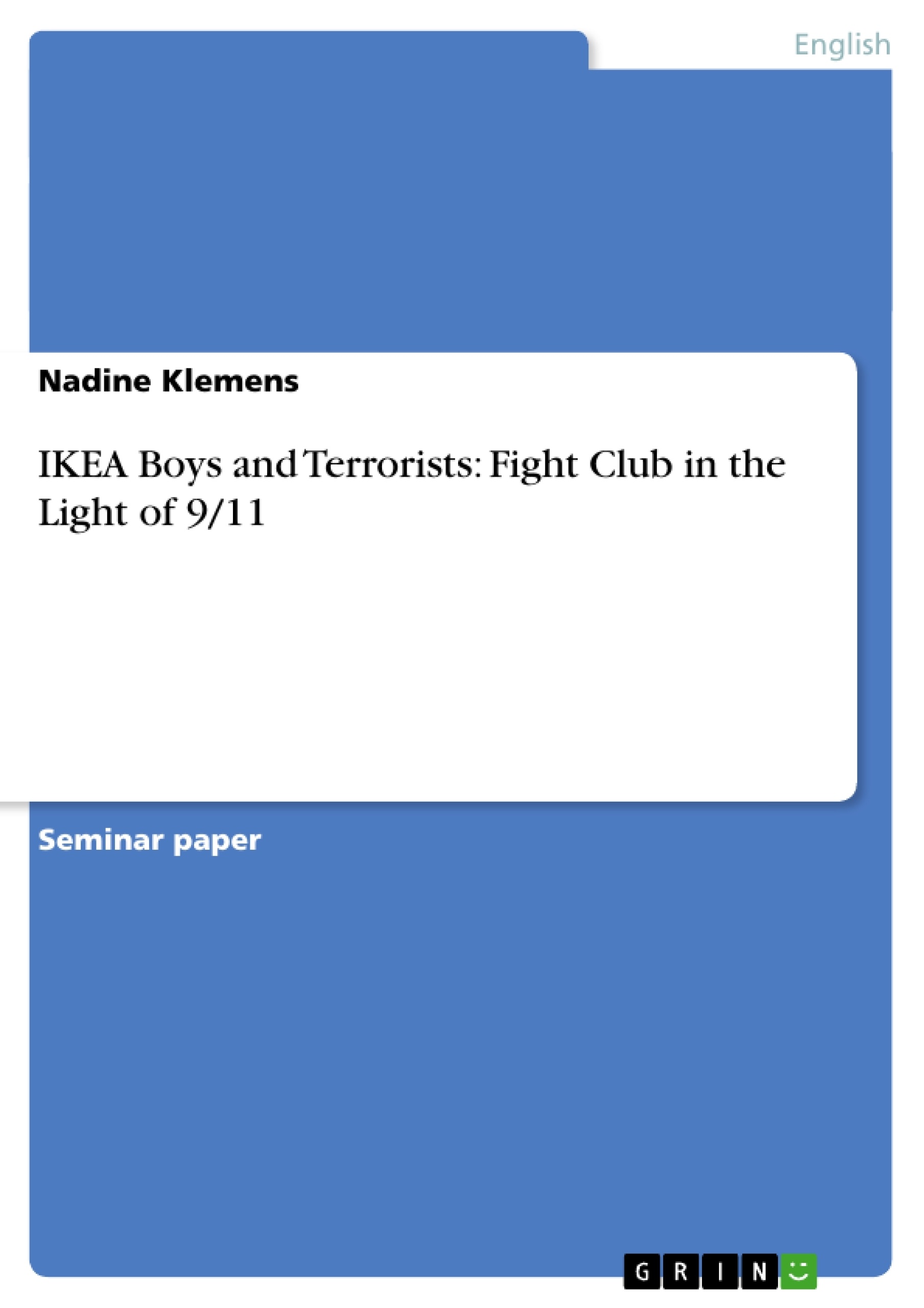Something which was a bomb, a big bomb, has blasted my clever Njurunda coffee tables in the shape of a lime green yin and an orange yang that fit together to make a circle. [...] My Haparanda sofa group with orange slip covers, design by Erika Pekkari, it was trash, now. And I wasn’t the only slave to my nesting instinct. The people I know who used to sit in the bathroom with pornography, now they sit in the bathroom with their IKEA furniture catalogue. […] It took my whole life to buy this stuff. […] Then you’re trapped in your lovely nest, and the things you used to own, now they own you. Until I got home from the airport (Palahniuk 44 f.).
As the narrator in Chuck Palahniuk’s Fight Club comes home from a business trip, he realizes that his fancy IKEA nest has been blown to pieces by a bomb. The destruction of his home is the beginning of a quest for identity, a process that makes him the leader of an underground terrorist organization in the end.
Fight Club gives insight to a social malaise that has gripped American men, it is the portrait of the nihilistic generation that is commonly referred to as Generation X. Palahniuk depicts the life of a man who grew up in a time without great wars, without a Great Depression. Hence, he is desperately trying to give his insignificant life a meaning since he cannot give it to a greater cause.
This work discusses both Palahniuk’s novel and the David Fincher movie that has been based on it with regard to what these works convey about terrorism and western culture. Furthermore, the impact of 9/11 on Fight Club is examined: how has 9/11 changed the perception of the novel and the movie?
Table of Contents
- Introduction
- 9/11 as turning point in modern history?
- Plotting terror
- Fight Club
- The identity crisis of the nameless narrator
- Project Mayhem and its similarities to Al Qaeda
- Novel into movie: David Fincher's version of Fight Club
- FIGHT CLUB after 9/11
- Conclusion
Objectives and Key Themes
This paper aims to examine the relationship between terrorism and western culture, focusing on the novel Fight Club by Chuck Palahniuk and its adaptation by David Fincher. The paper explores the impact of 9/11 on the perception of these works, considering how the events of that day changed how terrorism is depicted in popular culture.
- The impact of 9/11 on the perception of terrorism in the United States
- The portrayal of terrorism in popular culture, specifically in Fight Club
- The role of identity crisis in fueling nihilism and violence
- The similarities between fictional and real-world terrorist organizations
- The effect of 9/11 on the understanding of Fight Club and its movie adaptation
Chapter Summaries
The introduction begins by establishing the context of Fight Club, referencing the narrator's experience of a bombing that destroys his home. This sets the stage for the exploration of the novel's themes of identity, consumerism, and the search for meaning in a seemingly meaningless world.
The second chapter focuses on the historical significance of 9/11, exploring its impact on American society and the rise of fear and paranoia. The author examines the changing perception of terrorism and its association with Islamic fundamentalism, exploring definitions and motivations behind terrorist actions, particularly those undertaken by Al Qaeda.
In the third chapter, the author delves into the narrative structure of Fight Club, focusing on the identity crisis experienced by the nameless narrator. It highlights the similarities between the fictional terrorist group "Project Mayhem" and Al Qaeda, showcasing the novel's exploration of the psychology of individuals drawn to violent ideologies.
The fourth chapter discusses David Fincher's film adaptation of Fight Club, exploring the differences and similarities between the novel and its cinematic counterpart. It examines how the visualization of the story impacts the audience and its perception of the themes explored.
Keywords
This paper focuses on the keywords of terrorism, Western culture, Fight Club, identity crisis, consumerism, nihilism, Al Qaeda, Islamic fundamentalism, and the impact of 9/11 on popular culture. It explores how these key concepts are intertwined and how they shape the understanding of both real-world events and fictional narratives.
- Citar trabajo
- Nadine Klemens (Autor), 2002, IKEA Boys and Terrorists: Fight Club in the Light of 9/11, Múnich, GRIN Verlag, https://www.grin.com/document/10922




